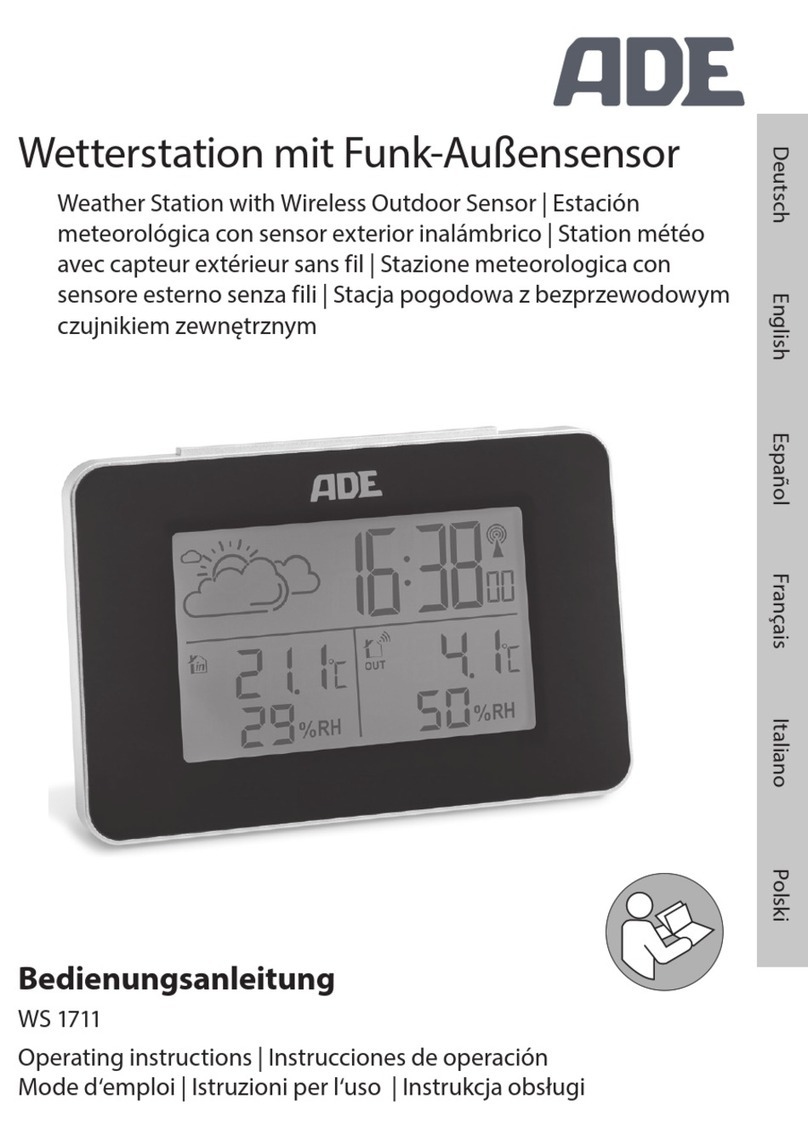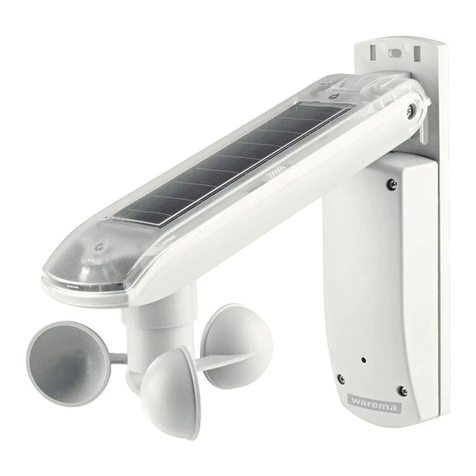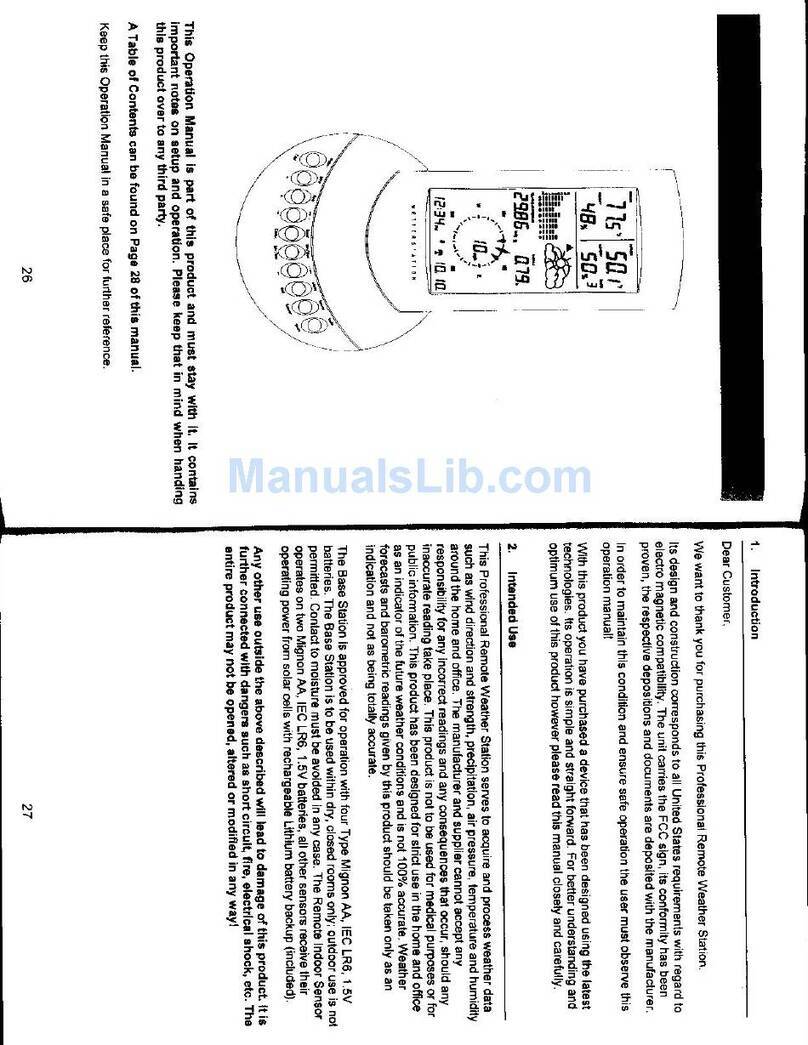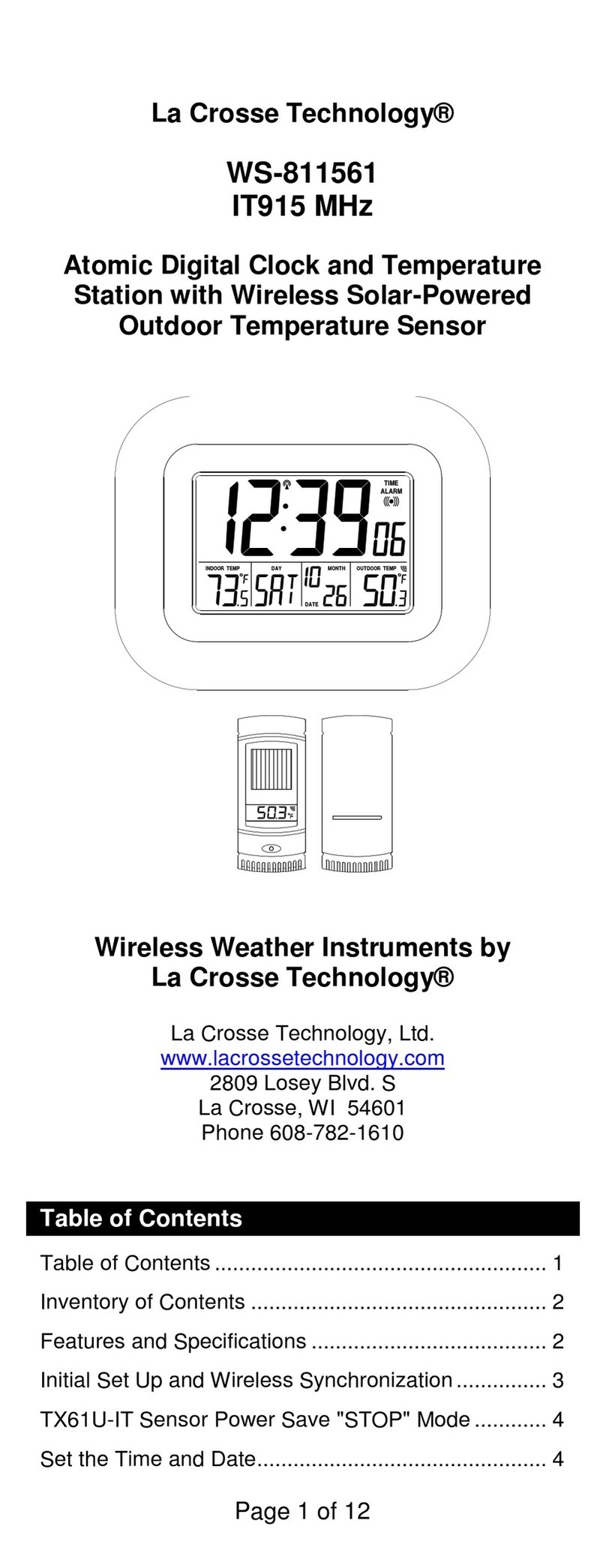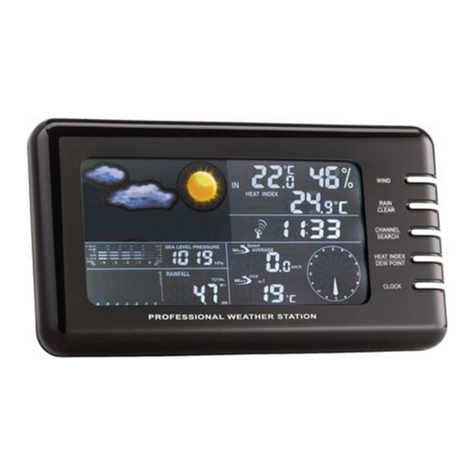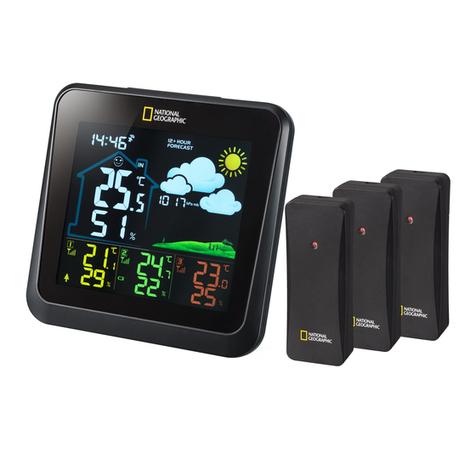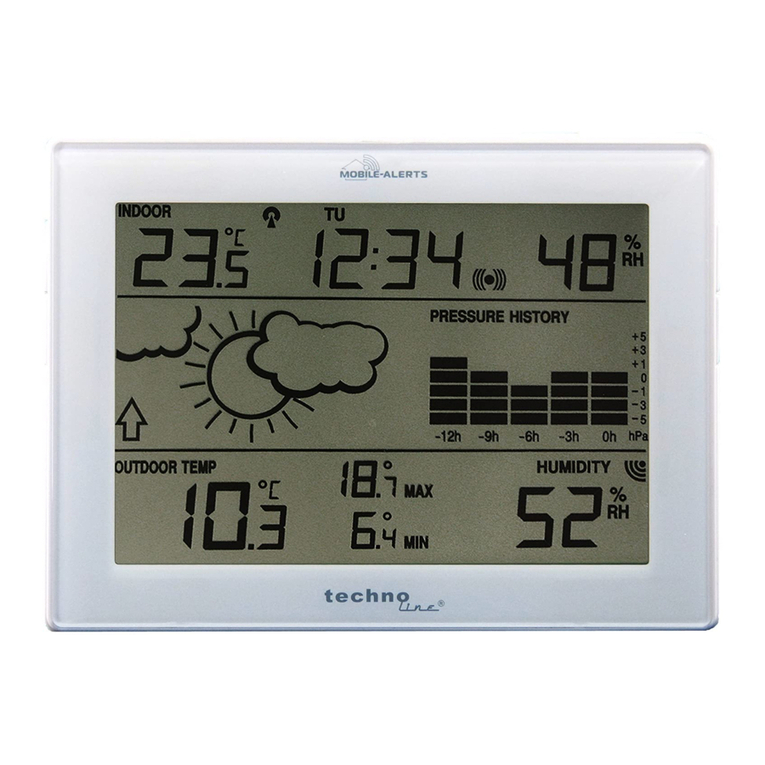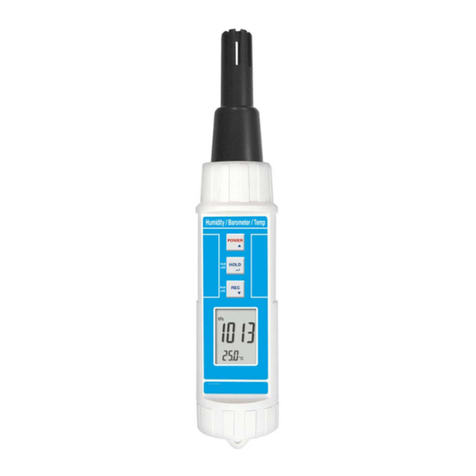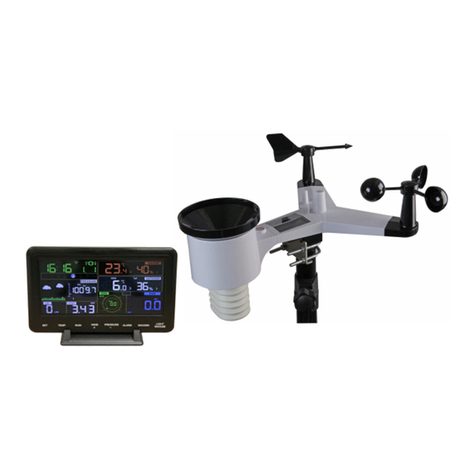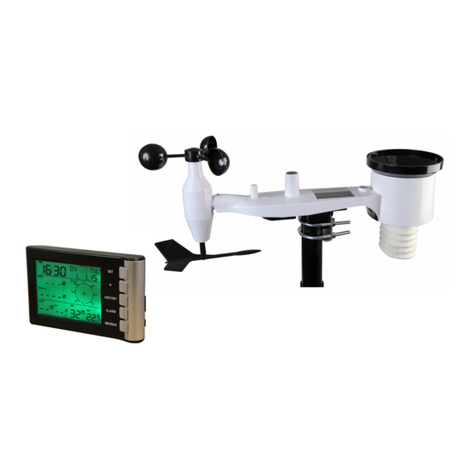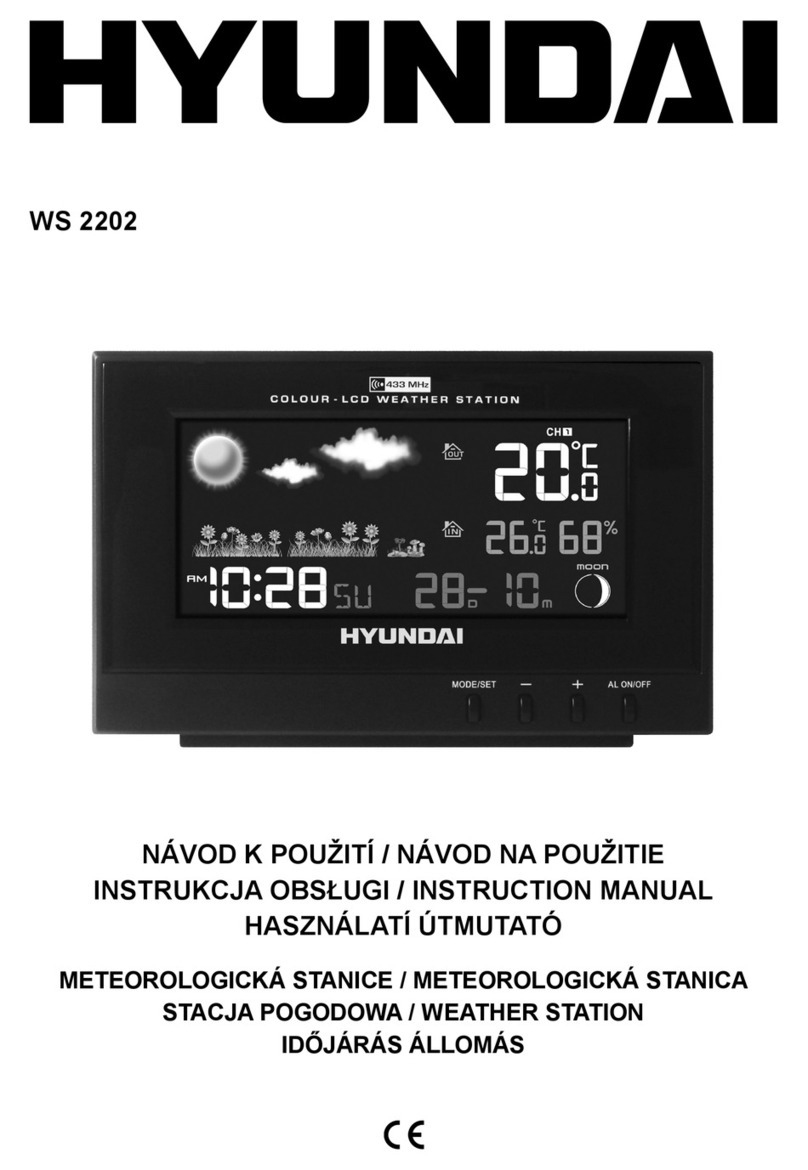
-In the setting modes, press +key or MIN/MAX key change or scrolls the value. Hold the +key or
MIN/MAX key for 3 second will increase/decrease digits in great steps.
-Press SNOOZE/LIGHT key or key idle 10 second, the setting mode will return to Normal Mode
Note: Please set the units firstly before change units’value. During change of units setting, units’ value
will change according to new units but it might cause resolution loss due to its internal calculation
algorithm.
5.3 Alarm Modes
- While in Normal Mode press the ALARM key to enter the High Alarm Mode
- Press the ALARM key again to enter Low Alarm mode
Remark: after the initial pressing of ALARM key, the display will be refreshed to show current high, low
alarm value. Normal alarm value will be displayed only for those already activated, all other not activated
values will be displayed with “---“or” --“instead.
−Press the ALARM key again to return the Normal Mode
−In the High Alarm Mode press the SET key to select the following alarm modes:
1. Time alarm (hour/minute)
2. Indoor humidity high alarm
3. Indoor temperature high alarm
4. Outdoor humidity high alarm
5. Outdoor temperature and dew point high alarm
6. Pressure high alarm
-In the Low Alarm Mode press the SET key to select the following alarm modes:
1. Time alarm (hour/minute)
2. Indoor humidity low alarm
3. Indoor temperature low alarm
4. Outdoor humidity low alarm
5. Outdoor temperature and dew point low alarm
6. Pressure low alarm
Canceling the Temperature Alarm While Sounding
a. When a set weather alarm condition has been activated, that particular alarm will sound and flash for 120
second. Press any key to mute the alarm. When weather alarm condition was activated again within 10
minutes, alarm will not sound but will continue to flash until weather conditions have become more steady.
This feature is useful to avoid repeated triggering for the same alarm value.
b. The alarm will reactivate automatically once the value has fallen below the set value, or if a new value is
entered.
The outdoor weather alarms
When a set outdoor weather alarm has been triggered, it will flash on the LCD display and the general
outdoor alarm icon and high/low alarm icon will flash accordingly. For example, in outdoor temperature
display mode, when dew point high alarm is triggered, DEW POINT icon will flash along with general
outdoor alarm icon and high alarm icon flashing, telling that the current alarm source is from dew point.
In the alarm modes, Press + key or MIN/MAX key change or scrolls the alarm value. Hold the + key or
MIN/MAX key for 3 second to change the number in greater step. Press the ALARM key to choose the
alarm on or off (if alarm is enabled, the speaker icon on the LCD will be turned on indicating the alarm
function has been enabled). Press the SET key to confirm the setting and continue pressing the SET key
to toggle through each alarm mode until it returns to the normal display mode.
Press SNOOZE/LIGHT key or key idle 10 second at any time, the alarm mode will return to Normal Mode
3) Calendar setting (year /month /date)
4) Temperature display unit degree Celsius or Fahrenheit
5) Air pressure display units in hPa or inHg
6) Relative pressure setting from 919.0hPa – 1080.0hPa (default 1013.5hPa)
7) Pressure threshold setting (default 2hPa)
8) Storm threshold setting (default 4hPa)
